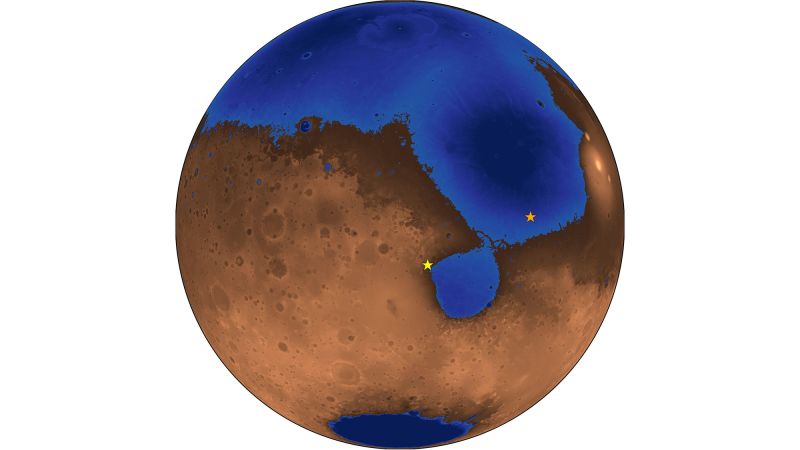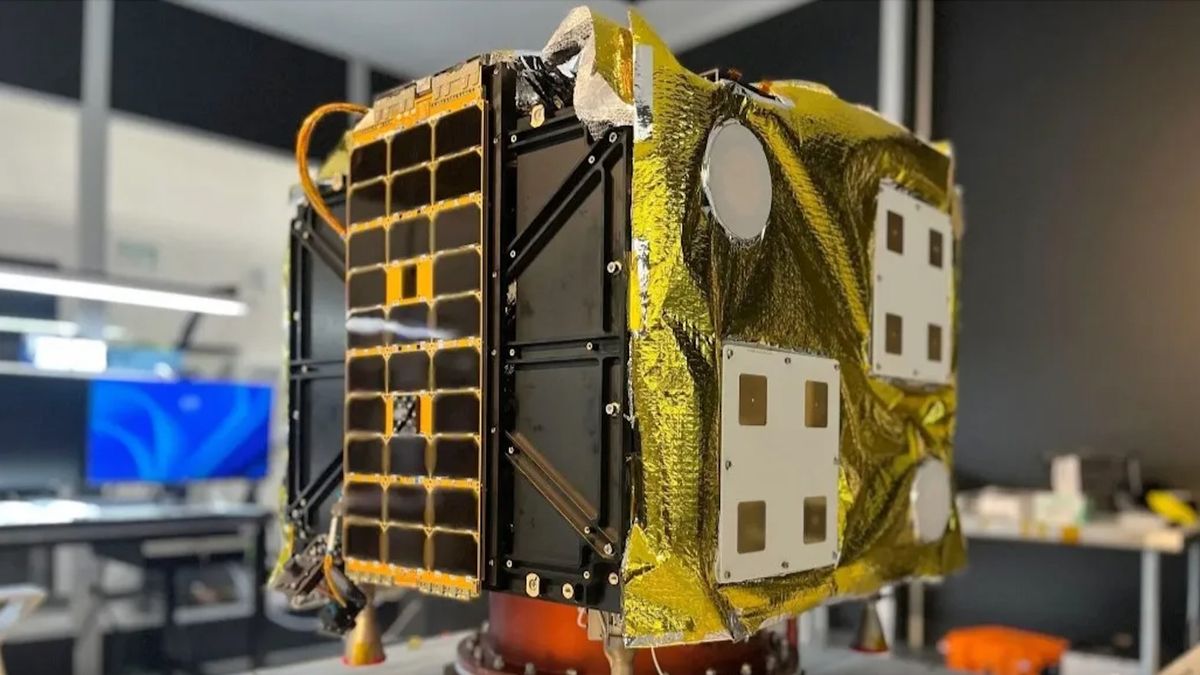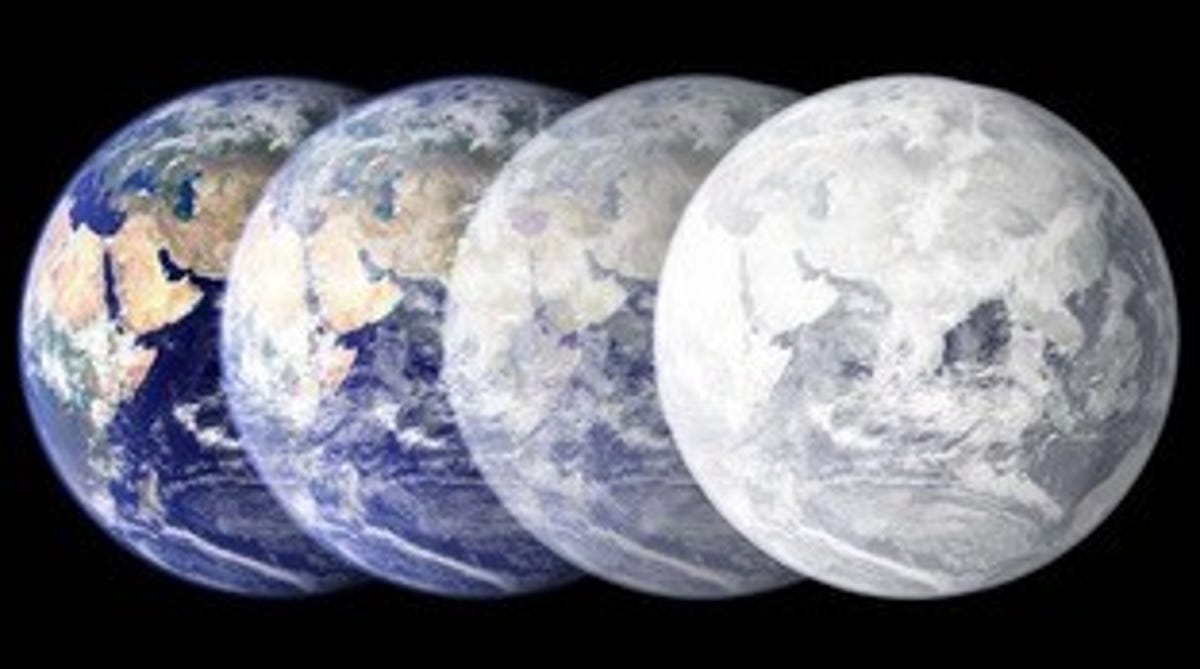
Subscribe to CNN’s Wonder Theory science newsletter. Dive into cosmic updates on extraordinary discoveries, advancements in science, and more.
CNN —
Recent research suggests that Mars may have been home to an ocean with waves lapping against sandy shores approximately 3.6 billion years ago. This fascinating conclusion comes from data gathered by China’s Zhurong rover using its ground-penetrating radar during its mission from May 2021 to May 2022.
The Zhurong rover touched down in Utopia Planitia, a flat area located within the largest confirmed impact basin on Mars, adjacent to a series of ridges in the northern hemisphere. For years, researchers have speculated whether these ridges might be the remnants of an ancient shoreline, motivating Zhurong’s mission to find proof of past water sources.
The findings from this study, published in the journal Proceedings of the National Academy of Sciences, are based on radar data collected by Zhurong, which investigated subsurface rock layers.
“We’re discovering locations on Mars that appear to resemble ancient beaches and river deltas,” reported study co-author Benjamin Cardenas, an assistant professor at Penn State’s geology department. “Our findings indicate the presence of wind and waves along with plenty of sand—essentially, a beach environment that could have been akin to a vacation destination.”
Additionally, the study authors suggest that the Martian climate might have been warmer and wetter for significantly longer periods than earlier estimates indicated.
These findings contribute to the growing evidence that Mars once boasted a milder, wetter climate as well as an ocean covering one-third of its surface—conditions that could have fostered an environment suitable for life.

In the 1970s, NASA’s Mariner 9 and Viking 2 were the pioneering missions that first observed features indicative of an ancient Martian ocean.
Utopia Planitia, which dates back to the Hesperian Period (around 3.7 billion to 3 billion years ago), shows limited evidence of standing water compared to other older Martian regions, notes Aaron Cavosie, a senior lecturer and planetary scientist at the Space Science and Technology Centre at Curtin University in Perth, Australia. Cavosie was not part of the recent study.
“The Mariner 9 orbiter first captured images of significant canyons on Hesperian surfaces back in the 1970s, but these are generally interpreted as a representation of catastrophic groundwater bursts rather than evidence of standing water,” explained Cavosie. “By this time, the theory suggests Mars’ climate had cooled, drying out its surface.”
Numerous spacecraft have gathered data indicating that much of Mars’s water has escaped into space as its atmosphere deteriorated, and scientists continue to explore the reasons behind this significant transformation. As Mars cooled, it is believed that some water transitioned underground as ice or chemically bonded with rocks to form minerals.
Images captured by Viking portrayed what appeared to be a shoreline in Mars’s northern hemisphere. However, unlike the smooth shorelines seen on Earth, this Martian feature was irregular, showing significant height variations of up to 6.2 miles (10 kilometers).
Study co-author Michael Manga, a professor of Earth and planetary science at UC Berkeley, and his team previously proposed that volcanic activity in the region, along with changes in Mars’s rotation, may have distorted the shoreline over time, making it uneven.
“Changes to Mars’s spin axis have altered its shape, leading to the uneven surfaces we see today,” Manga explained.
However, as Cavosie pointed out, what scientists desperately need to address these questions are observations from what he termed “boots on the ground,” or in this case, rover tracks. Zhurong was tasked with determining whether the rock layers buried in Utopia Planitia were volcanic or if they contained sediments typical of an ocean.

During its mission, Zhurong navigated around the ridges of Utopia Planitia, collecting radar data extending as deep as 260 feet (80 meters) below the surface.
Radar analysis revealed sedimentary structures between 32.8 and 114.8 feet (10 and 35 meters) deep that resembled layered beaches on Earth, exhibiting a 14.5-degree inclination. The rover also measured the grain sizes, which matched sand particle dimensions.
“These structures don’t resemble sand dunes or impact craters, nor do they appear to be lava flows. That’s when we began to consider the possibility of oceans,” remarked Manga. “The orientation of these formations aligns with what the ancient shoreline would have looked like.”
The geological features closely resembled coastal sediment deposits found on Earth, such as those in the Bay of Bengal, which are formed in the presence of a long-term stable ocean, according to the study’s authors.
The research team believes the rover has uncovered “foreshore deposits,” which require millions of years to develop as sediments transported by tides and waves gradually slope into the ocean.
“This discovery caught our attention immediately as it indicates the presence of waves, implying a dynamic interaction of air and water,” stated Cardenas. “When we examine the origins of early life on Earth, it emerged in regions where oceans met land, painting a picture of ancient environments that could have been conducive to life.”

It is likely that rivers contributed sediments to these ancient oceans, which were then redistributed by waves to form beaches. NASA’s Perseverance rover has also provided evidence of sedimentary rocks, carved channels, and remnants of what appears to be an ancient river delta, highlighting how water previously molded the Martian terrain.
Once the ocean receded, volcanic eruptions and dust storm debris likely smothered the beaches, effectively preserving their remnants, Cardenas explained.
“It’s challenging to ascertain how the past 3.5 billion years of erosion might have modified or completely erased evidence of an ocean,” he noted. “However, these deposits present a unique dataset that stands out.”
Moving forward, the research team aims to determine the wave heights and tidal patterns in the former ocean, how long it remained, and if it created an environment conducive to life, Manga stated.
However, François Forget, a senior research scientist and director at the French National Centre for Scientific Research, expressed skepticism about the study’s assertion that only ocean shorelines can account for the radar data. Forget did not participate in this research.
“I believe we cannot conclusively rule out the possibility that the observations may stem from dune formations,” which he considers to be more likely on Mars.
Meanwhile, Dr. Joe McNeil, a planetary scientist and postdoctoral researcher at London’s Natural History Museum, asserts that these findings bolster the hypothesis of an ancient northern ocean on Mars by providing vital subsurface evidence. McNeil was not part of the research team.
“If these coastal deposits indeed signify sediment accumulation at the edge of a former ocean, this strongly suggests an extended period of stable liquid water, which carries significant implications for understanding Mars’s climatic history,” McNeil remarked. “It would indicate that Mars had conditions that could have supported a hydrological system capable of nurturing potential life for substantial durations.”

Related Posts
First Private Spacecraft Set for Moon-Beyond Journey Faces Challenges
The first commercial spacecraft to venture beyond the Moon is currently en route to deep space, yet the mission is encountering unidentified challenges as the team strives to establish communication…
Impending Ice Age Threatened by Climate Change Chaos, According to Analysis
A team of researchers believes they can forecast the timing of the next ice age on Earth, but there’s no need to be alarmed—it’s not expected to occur for a…








